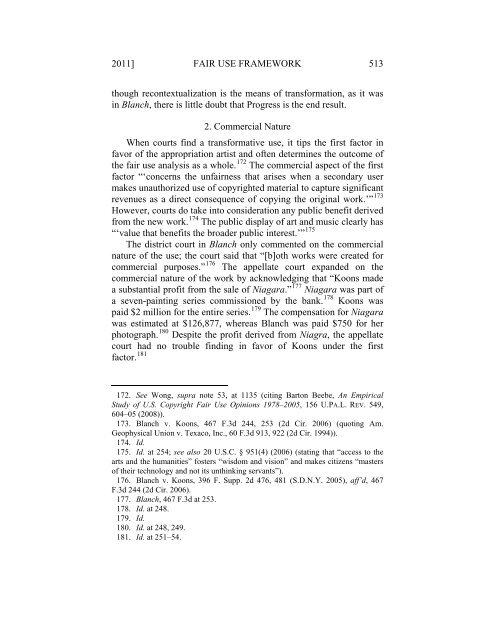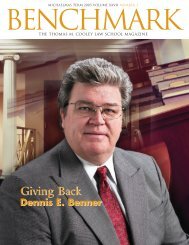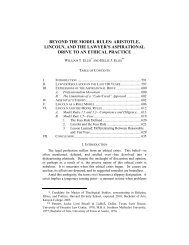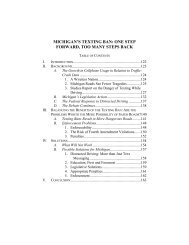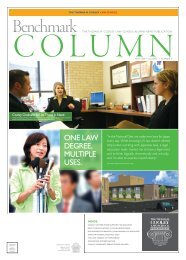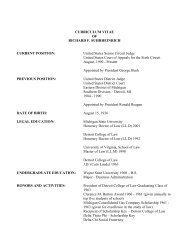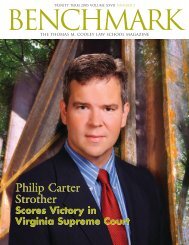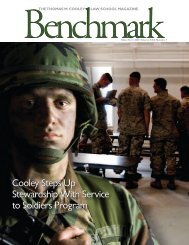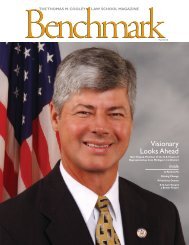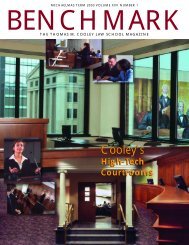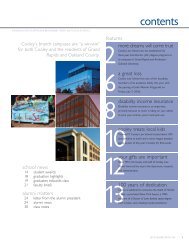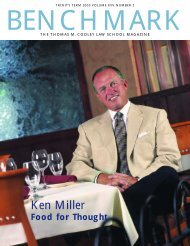Blanch It, Mix It, Mash It - Thomas M. Cooley Law School
Blanch It, Mix It, Mash It - Thomas M. Cooley Law School
Blanch It, Mix It, Mash It - Thomas M. Cooley Law School
You also want an ePaper? Increase the reach of your titles
YUMPU automatically turns print PDFs into web optimized ePapers that Google loves.
2011] FAIR USE FRAMEWORK 513<br />
though recontextualization is the means of transformation, as it was<br />
in <strong>Blanch</strong>, there is little doubt that Progress is the end result.<br />
2. Commercial Nature<br />
When courts find a transformative use, it tips the first factor in<br />
favor of the appropriation artist and often determines the outcome of<br />
the fair use analysis as a whole. 172 The commercial aspect of the first<br />
factor “‘concerns the unfairness that arises when a secondary user<br />
makes unauthorized use of copyrighted material to capture significant<br />
revenues as a direct consequence of copying the original work.’” 173<br />
However, courts do take into consideration any public benefit derived<br />
from the new work. 174 The public display of art and music clearly has<br />
“‘value that benefits the broader public interest.’” 175<br />
The district court in <strong>Blanch</strong> only commented on the commercial<br />
nature of the use; the court said that “[b]oth works were created for<br />
commercial purposes.” 176 The appellate court expanded on the<br />
commercial nature of the work by acknowledging that “Koons made<br />
a substantial profit from the sale of Niagara.” 177 Niagara was part of<br />
a seven-painting series commissioned by the bank. 178 Koons was<br />
paid $2 million for the entire series. 179 The compensation for Niagara<br />
was estimated at $126,877, whereas <strong>Blanch</strong> was paid $750 for her<br />
photograph. 180 Despite the profit derived from Niagra, the appellate<br />
court had no trouble finding in favor of Koons under the first<br />
factor. 181<br />
172. See Wong, supra note 53, at 1135 (citing Barton Beebe, An Empirical<br />
Study of U.S. Copyright Fair Use Opinions 1978–2005, 156 U.PA.L. REV. 549,<br />
604–05 (2008)).<br />
173. <strong>Blanch</strong> v. Koons, 467 F.3d 244, 253 (2d Cir. 2006) (quoting Am.<br />
Geophysical Union v. Texaco, Inc., 60 F.3d 913, 922 (2d Cir. 1994)).<br />
174. Id.<br />
175. Id. at 254; see also 20 U.S.C. § 951(4) (2006) (stating that “access to the<br />
arts and the humanities” fosters “wisdom and vision” and makes citizens “masters<br />
of their technology and not its unthinking servants”).<br />
176. <strong>Blanch</strong> v. Koons, 396 F. Supp. 2d 476, 481 (S.D.N.Y. 2005), aff’d, 467<br />
F.3d 244 (2d Cir. 2006).<br />
177. <strong>Blanch</strong>, 467 F.3d at 253.<br />
178. Id. at 248.<br />
179. Id.<br />
180. Id. at 248, 249.<br />
181. Id. at 251–54.


